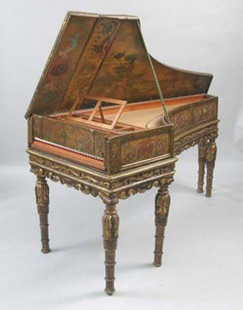Influential Events, Institutions, and People-continued

In Europe, the Church and state were the primary influences of the Baroque era. Composers were either employed directly by the Church, or employed by a monarch or local ruler, such as a King, Duke, or Archduke. Each ruler had their own court which included court musicians. The court-hired musicians and composers were considered servants to the monarch. They were expected to perform and compose for any occasion the monarch chose. Johann Sebastian Bach was one of these court composers. As many of these court composers also wrote music for the Church, they had an extremely large musical output, creating new music for each Sunday’s church services.
A composer’s fortunes were dependent upon the status of music in the court where he was working. In other words, if the king or prince wasn’t a fan of music, there wasn’t much work to be had. The type of music that was composed was heavily influenced by the court or church that the music was written for. These court and church composers were at the mercy of the whims and desires of their employers.
Composers during the Baroque era relied heavily on the harpsichord as a tool for composition, as well as an instrument in its own right. The harpsichord has a few major differences from the modern piano. While both are keyboard instruments, the harpsichord has strings which are plucked, rather than struck by hammers. This meant that the performer could not control the tone or volume.
The development of the modern piano was revolutionary. Its versatility gave it an advantage over the harpsichord, as the musician could now control both its tone and volume. The piano as we know it today became widely used around 1750, which was right at the end of the Baroque era. Because of its emergence around this time, it is considered to be more of a Classical era instrument.